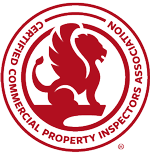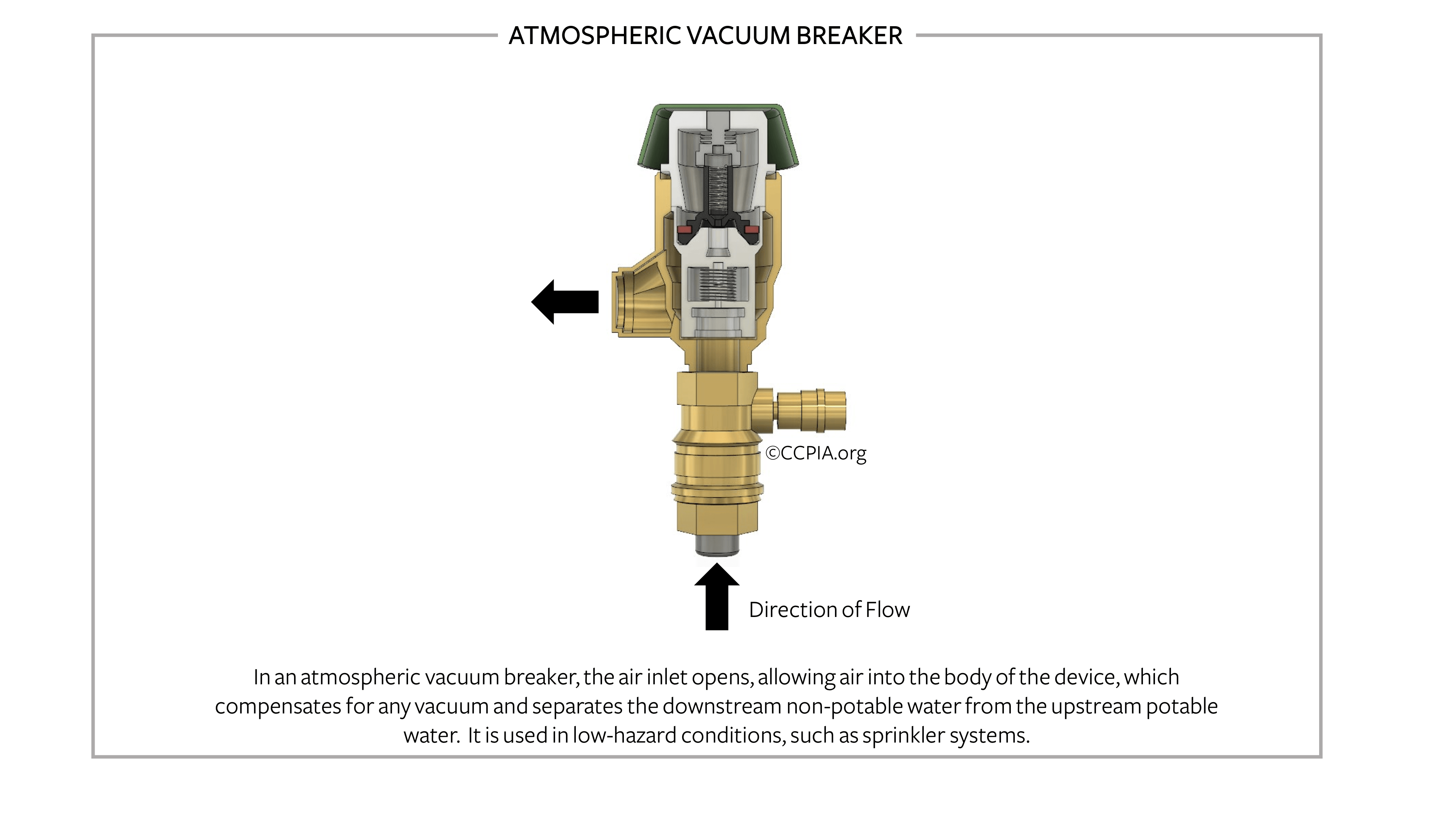Backflow preventers can be complex and are best thoroughly inspected by a plumbing professional or a certified backflow prevention inspector. However, it’s important for the commercial property inspector to be able to identify common devices and assemblies in order to accurately note them in the commercial property inspection report. Additionally, if you decide to hire a plumbing expert to inspect the system, you’ll need to be able to understand their report to add it to your client’s final commercial property inspection report.
What is backflow?
Backflow is a plumbing term for the reversal of the normal and intended direction of water flow in a water system.
Preventing Backflow
Backflow preventers, also known as backflow devices and assemblies, are installed to prevent backflow, which can contaminate the potable water supply.
How does backflow occur?
There are two main ways backflow can occur:
- Back-Pressure: This occurs when the water pressure within a property’s plumbing system exceeds the pressure in the water distribution lines, which can cause the normal flow to reverse. This can occur in pressurized systems, such as boilers, chemical feed pumps, elevated tanks, recirculating systems, or in a pump used to increase water pressure within the building’s plumbing system to reach a higher floor.
- Back-Siphonage: This occurs when there is a negative pressure in the water distribution system. The reduction in water pressure draws water from the private water system to the public water system. This may be a result in a leak in the waters mains, or a high-water withdrawal rate, such as during fire-fighting.
Commercial Building Backflow Prevention, the EPA, and Municipal Regulations
The Environmental Protection Agency (EPA) holds local water suppliers responsible for maintaining a certain level of purity in the potable water supply. Therefore, state regulations and local municipalities require backflow preventers to be installed in most types of commercial properties. Backflow preventers are commonly placed at each cross-connection point found within the plumbing systems of apartments, condominiums, food establishments, and most public and commercial places. The type of backflow preventer installed will be in line with the degree of hazards present at the premises. Check with your local municipality for their Backflow Prevention Program, also commonly referred to as Cross-Connection Plan Requirements.
Backflow prevention program requirements typically include the following:
- a plumbing permit for the initial installation, relocation or replacement of backflow preventers;
- an annual inspection of the backflow preventer by a certified backflow prevention inspector. An inspection may also be required if the system is repaired, replaced, or relocated; and
- an annual test of the backflow preventer by a certified backflow prevention tester. A test of the system may also be required if the system is repaired, replaced, or relocated.
How do I begin commercial building inspection and property research?
Backflow preventers are excluded from the CCPIA’s Standards of Practice, but a commercial building inspector should note whether one is present at the subject property. You may also want to discuss with your client about expanding the scope of the inspection to include further evaluation of the property’s backflow preventer.
Backflow preventer devices and assemblies can be found above ground, below ground, or housed within the building itself. In some cases, a commercial property may be exempt from the installation of a backflow preventer. If the subject property doesn’t have a backflow preventer and your client would like to verify if the property is exempt from this requirement, contact your local municipality or government office to verify the property’s exemption status.
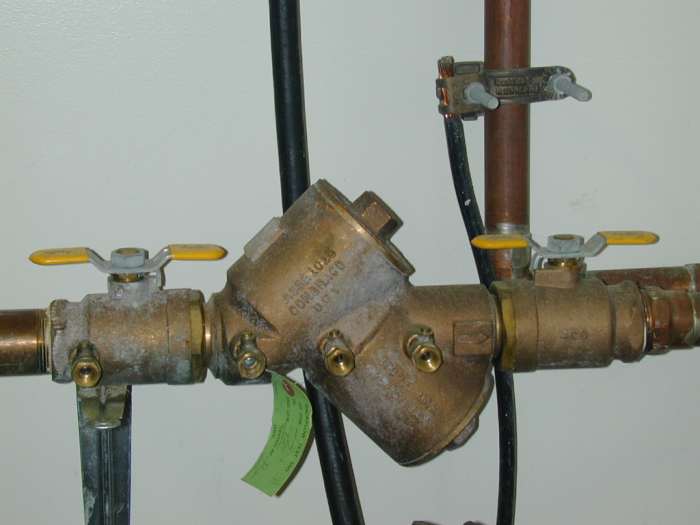
If the property has a backflow preventer, an inspection tag should be attached to the device or assembly. The tag is a record of the date of the last inspection of the system and the name of the person who performed it. If a tag isn’t present, note this in your inspection report. The backflow prevention inspection should be completed by a certified backflow prevention inspector. This professional is also responsible for submitting the required paperwork to the local government office; therefore, you can verify that the system’s inspection is up to date by contacting the local governmental office.
Generally, the installation and maintenance of backflow preventers are handled by property owners. If your client is a tenant and you need more information about the backflow prevention system, contact the property owner or manager. Alternatively, you can hire a specialty consultant. Taking these extra measures will ensure that the system is properly maintained in accordance with the state’s and local municipality’s requirements. It’s essential for the health of the building’s occupants and customers.
Evidence of Backflow
There are three general indicators of a backflow problem:
- water contamination;
- changes in water pressure; and/or
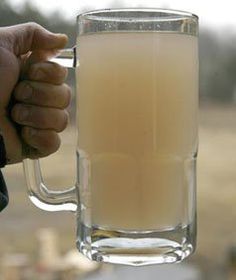
- illness outbreak.
During the research portion of the inspection, the commercial property inspector can ask questions that might reveal evidence of backflow. For example, in an interview or pre-inspection questionnaire with the person(s) with the most knowledge (typically, the building’s owner, manager, or your client), ask:
- Have you or any other occupants noticed a change in the water’s color, taste, or smell?
- Have you or any other occupants noticed a change in water pressure? This could be localized to a certain fixture or area in the building.
- Have you or anyone other occupants noticed an illness breakout or common chronic illnesses?
If the answer to any of these questions is yes, recommend water testing of the building’s system by a qualified professional.
Why does backflow go undetected?
Although water contamination is often evident through taste, smell, or discoloration, sometimes it’s far less noticeable.
Here are a few reasons why backflow can go undetected:
- Sampling and monitoring. Random sampling may not detect transient, localized bacterial contamination. In addition, water may not be tested frequently enough to identify a backflow problem.
- Water pressure. Changes in water pressure can indicate backflow issues. However, conventional pressure-monitoring equipment may not pick up reduced pressure, particularly if it’s localized. Also, reduced pressure is often due to line breaks or flushing and, therefore, not immediately treated as an incident worthy of investigation.
- Health effects. It can be difficult to connect backflow incidents to an illness outbreak or chronic health problems. Even so, it’s often after people get sick that backflow is considered a potential cause, which means the initial incident went undetected.
What should an inspector look for on a backflow assembly?
- Upon visual inspection, identify if there is any wear and tear on the backflow assembly, since severe weather can cause certain parts to break or become cracked.
- Check for any sort of visible leak on the backflow assembly or discharge. Dripping water is a sign that there is some kind of failure in the device, and it will need to be repaired as soon as possible.
Types of Backflow Preventers:
- Air gap preventer
- Reduced pressure principle
- Double-check valve
- Pressure vacuum breaker
- Atmospheric vacuum breaker
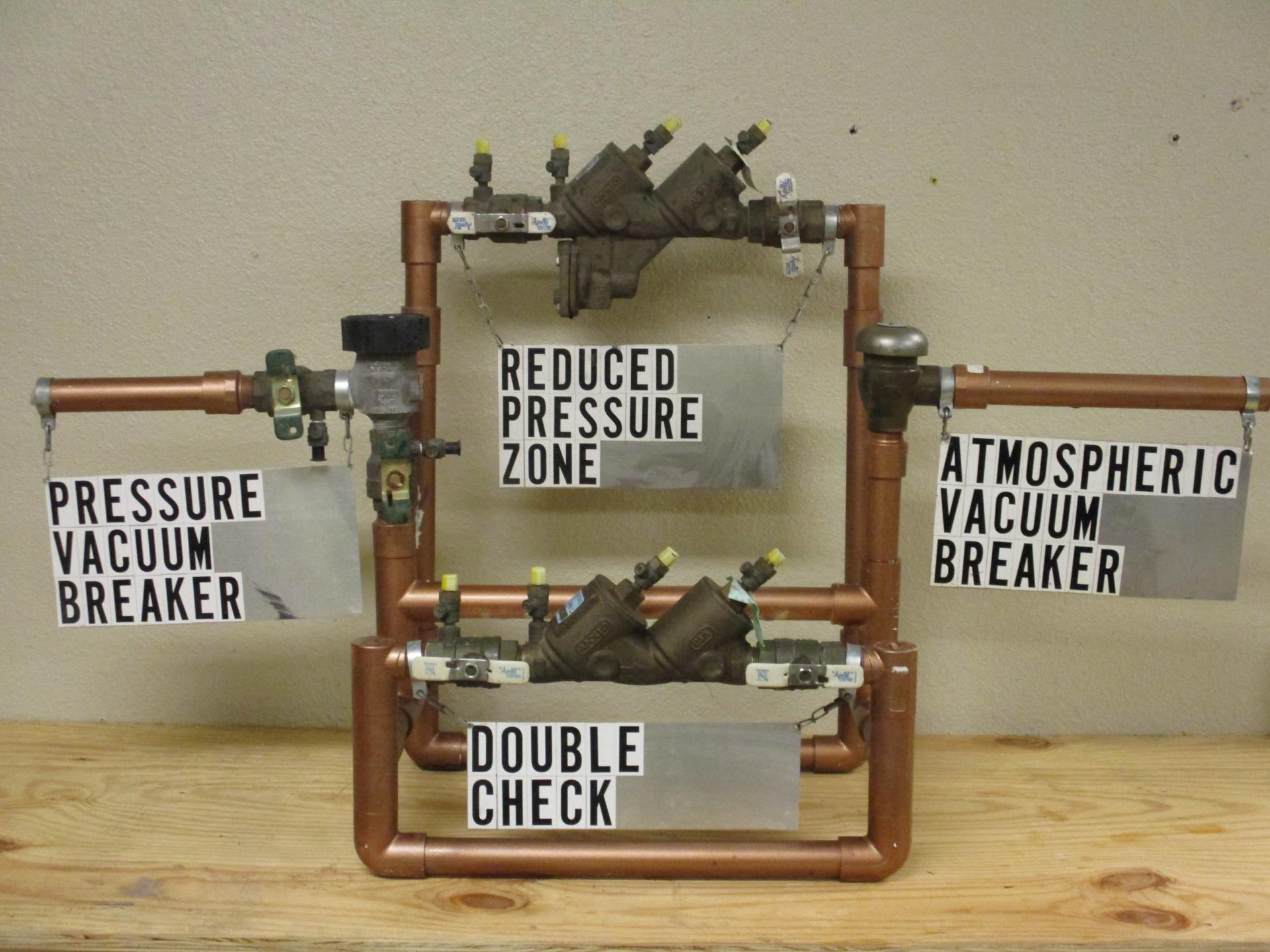
Types of Backflow Preventers
Air Gap Preventer
An air gap is a nonmechanical approach to backflow prevention. It creates a physical separation between the water supply pipe and the vessel. It is the most common backflow preventer and necessary to prevent any contaminant or pollutant from being siphoned or pushed back into the potable water supply.
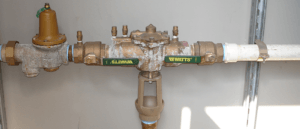
Air Gap Preventer
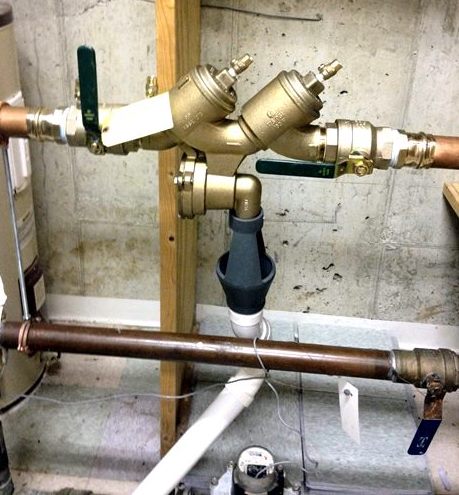
Air Gap Preventer
Reduced Pressure Zone (RPZ)
 The chamber is maintained at a pressure that is lower than the water supply pressure, but high enough to be useful downstream. Four test cocks are installed to allow the inspector to verify proper operation of the valve with a differential pressure meter. Two valves (one before and one after the RPZD) are provided to allow for testing and repair. Although compatible with both above-ground and below-ground installation, above-ground is more common.
The chamber is maintained at a pressure that is lower than the water supply pressure, but high enough to be useful downstream. Four test cocks are installed to allow the inspector to verify proper operation of the valve with a differential pressure meter. Two valves (one before and one after the RPZD) are provided to allow for testing and repair. Although compatible with both above-ground and below-ground installation, above-ground is more common.
Double-Check Valve
A double-check valve is designed for use in non-health hazard cross-connections and continuous pressure applications subject to back-pressure or back-siphonage incidents, such as lawn sprinklers, fire sprinkler lines, commercial pools, tanks and vats, and food cookers. Double-check valves (DCV; also called double-check assemblies or DCAs) are a good choice for underground or indoor installations. A DCA consists of an inlet shutoff valve, two independently operating spring-loaded check valves (usually inside a single valve body), four test cocks, and an outlet shutoff valve.
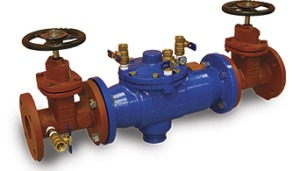
Double-Check Valve
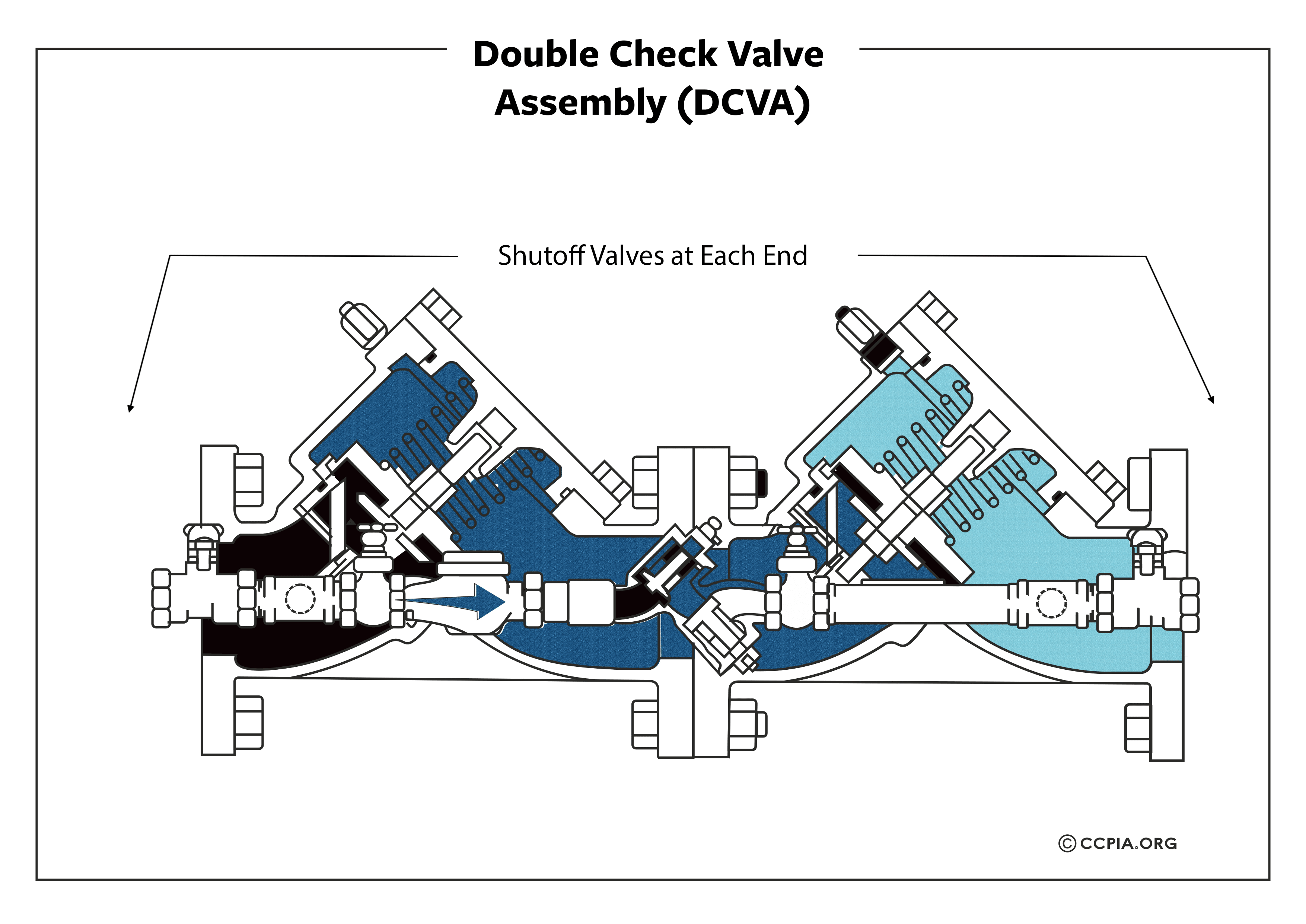
Pressure Vacuum Breaker
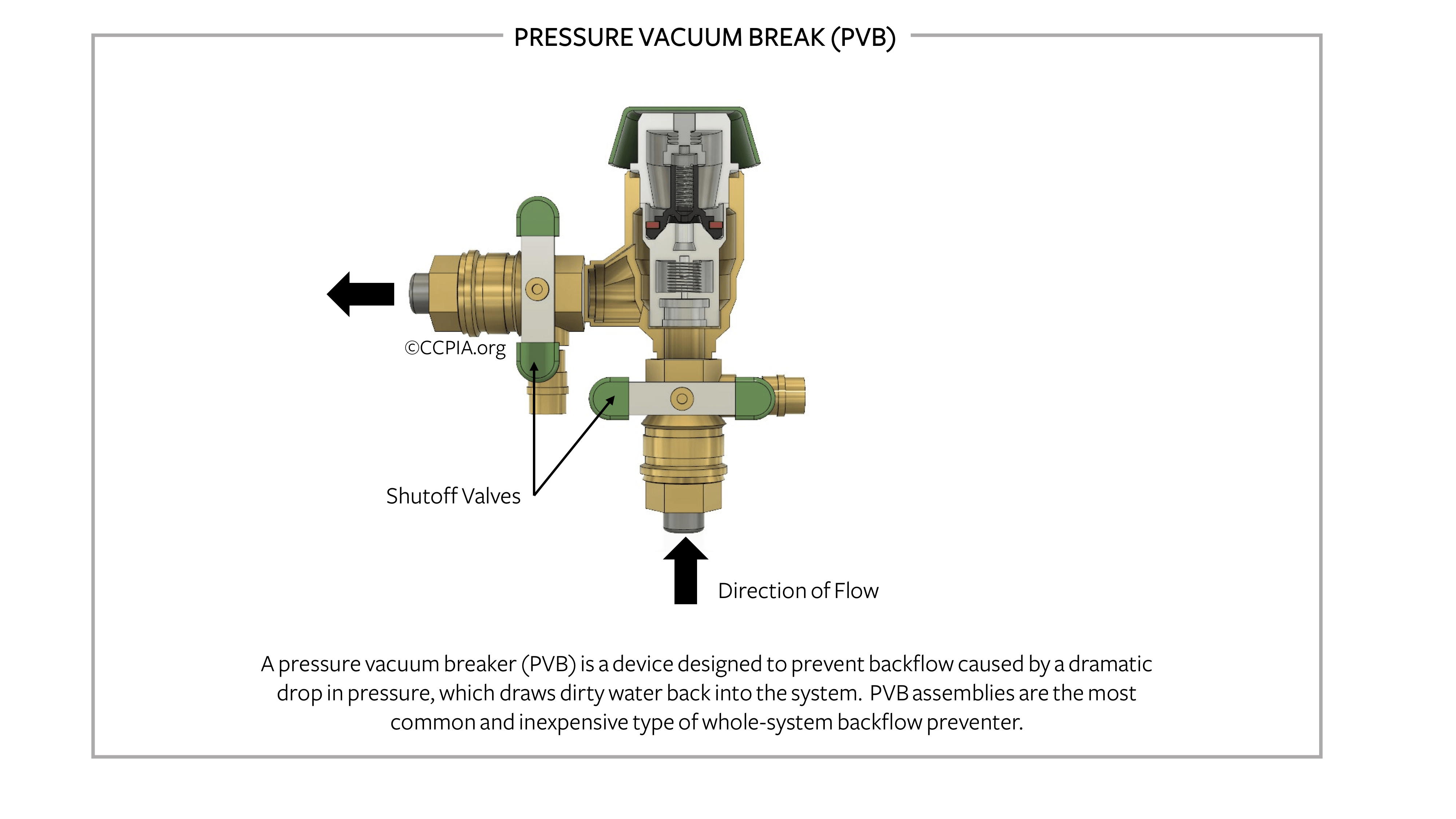
It consists of an inlet shutoff valve at the bottom, a single valve body consisting of a pressure vacuum breaker, a check valve, two test cocks, and an outlet shutoff valve. Some pressure vacuum breakers also offer built-in freeze protection; however, this only protects the PVB assembly. Inlet and outlet pipes can still freeze if the system isn’t properly winterized.
Atmospheric Vacuum Breaker
Conclusion
A backflow preventer is required to be installed at most commercial properties. It prevents the contamination of the potable water supply. Backflow preventers are excluded from CCPIA’s Standards of Practice, but the commercial building inspector should note whether one is present at the subject property. You may also want to talk to your client about expanding the inspection’s scope of work to include a thorough evaluation of its installation because a backflow preventer is vital for protecting the health of the building’s occupants and customers. A thorough evaluation of the system could include hiring a certified backflow inspector, or contacting your local regulating governmental office.

